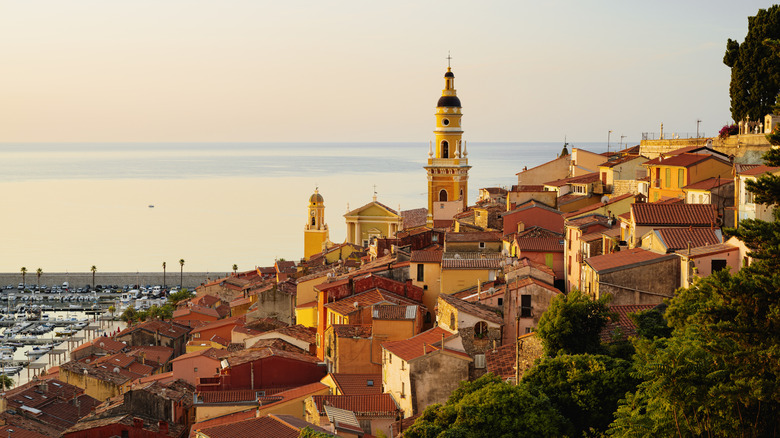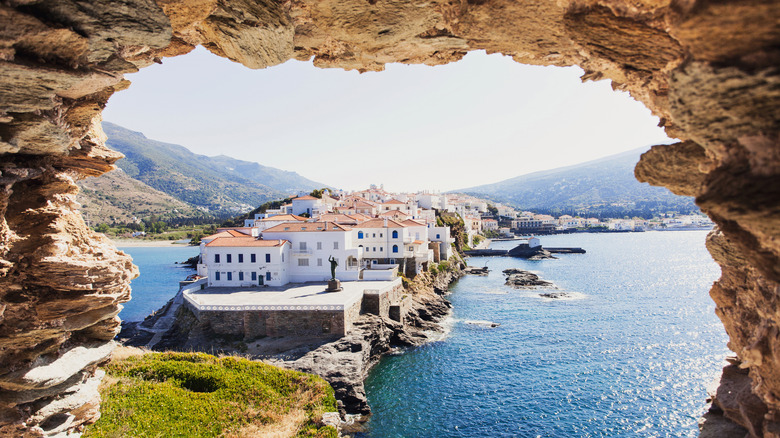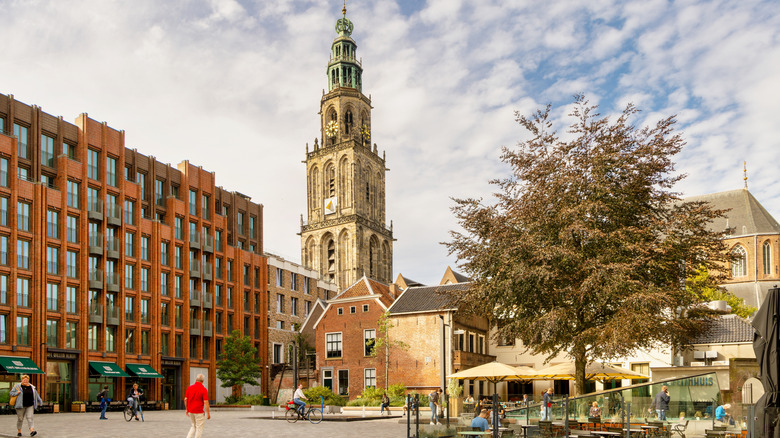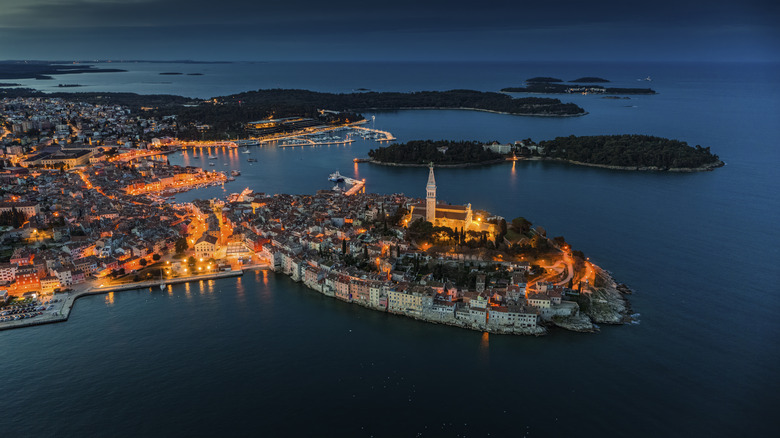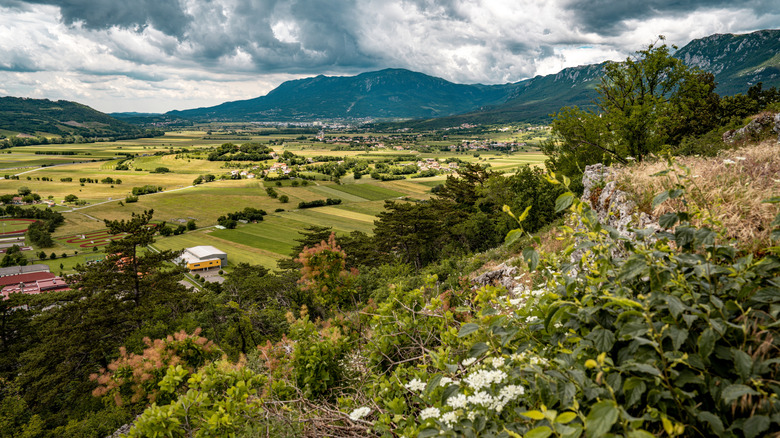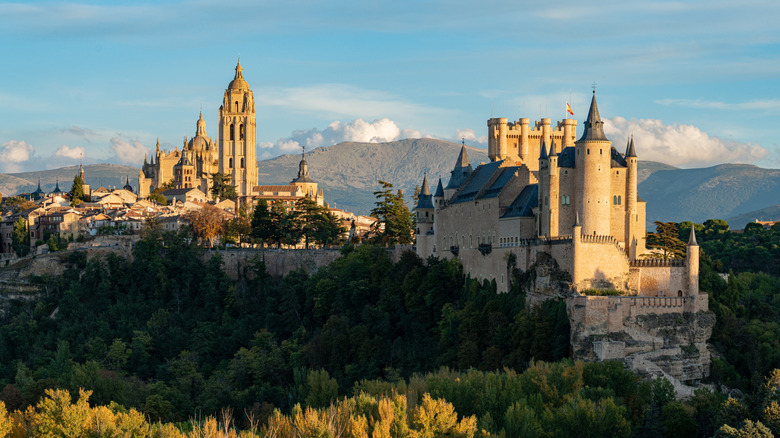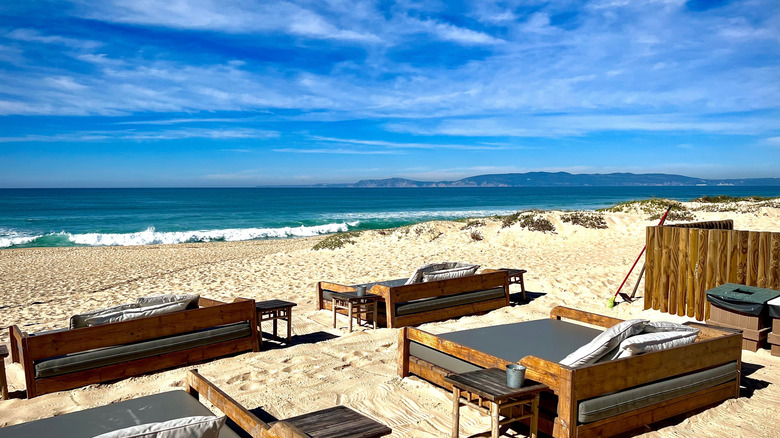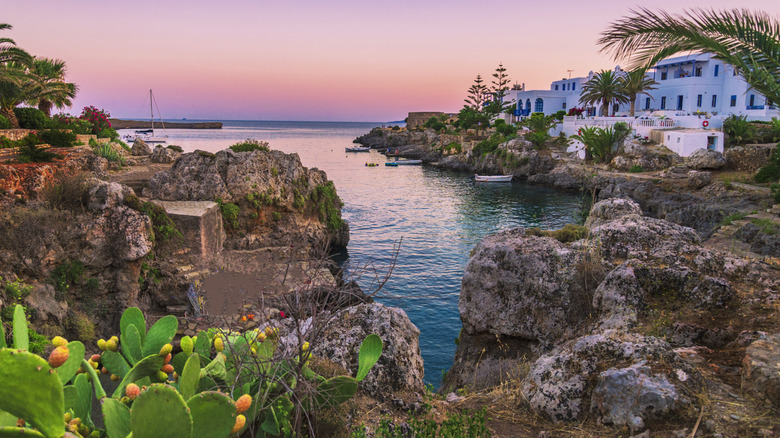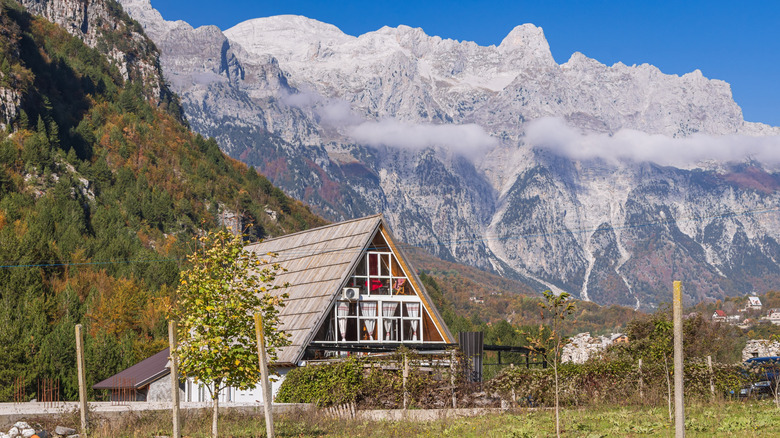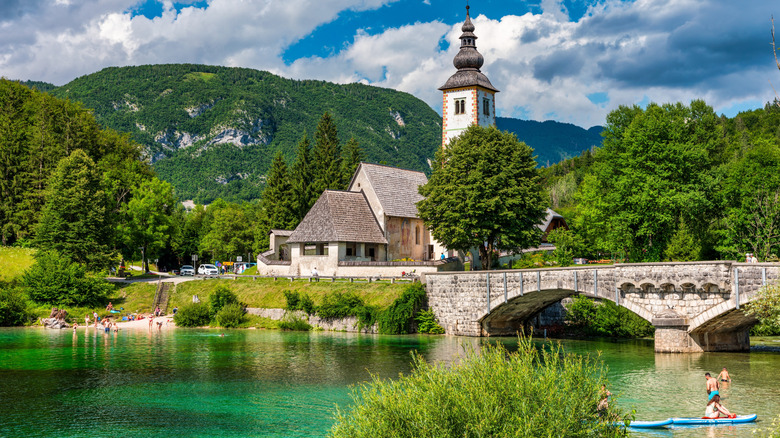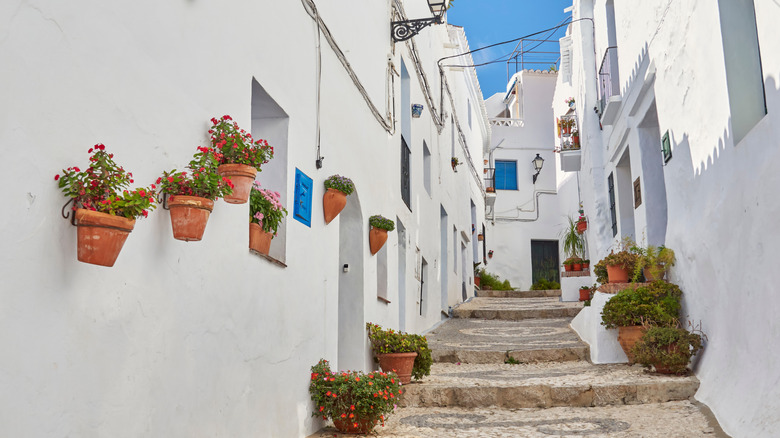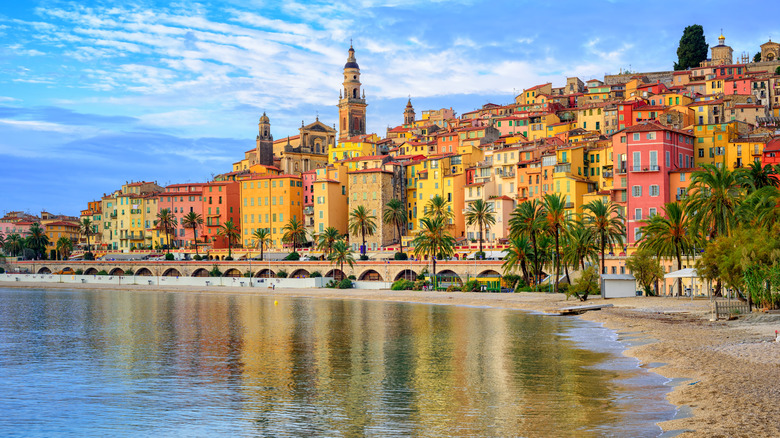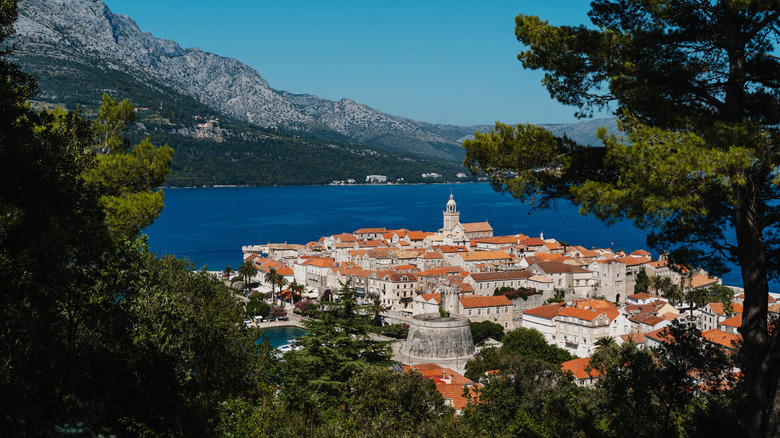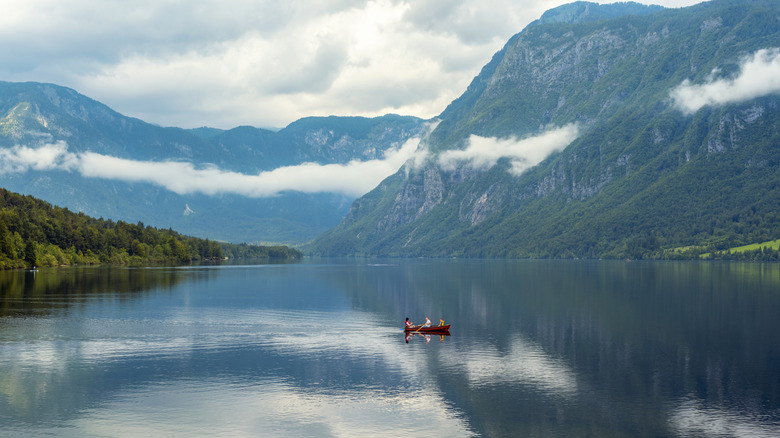Avoid Crowds At These Lesser-Known European Destinations
If you're hoping to plan a European holiday that doesn't involve chaotic town squares, noisy walking tours, overhyped tourist traps, or long lines for gelato, you've landed in the right place. When summer rolls in, holiday spots in Europe fill up fast, so much so that they begin to feel more like theme parks than real places. But here's a little secret; there are still plenty of low-key spots in and around the more popular destinations that offer slower ways of life and give you the time, space, and pace you need to fully explore them.
To cut through the noise of trending Instagram towns and dig out the real gems, we spoke to travel expert Kristin Winkaffe. Through her company (Winkaffe Global Travel), Kristin puts under-the-radar places on the map for travelers actually seeking them out, all while uplifting local communities and supporting sustainable travel. Her recommendations go all the way from alpine lakes in Slovenia to sleepy hill towns in Spain and seaside villages in Portugal and Croatia — the kind of places that remind you why we travel in the first place.
Andros, Greece
The Greek island of Andros is all about leafy hillsides, waterfall trails, and serene beaches. And yet, this charming little island somehow continues to fly under the radar compared to its more famous Mediterranean siblings. Just a two-hour ferry ride from Athens, Andros offers the kind of low-key beauty and quiet that's increasingly hard to find in the Cyclades. "It's got these amazing hiking trails, quiet beaches with no umbrellas in sight, and little villages where you can actually hear the birds and not someone live-streaming," says travel entrepreneur Kristin Winkaffe, who recommends Andros to both adventure and peace seekers.
Indeed, Andros has nearly 190 miles of marked walking paths passing through olive groves, quiet villages, and old stone bridges, making it one of Greece's most rewarding hiking destinations. Architecture enthusiasts will also enjoy wandering the historic island's streets just as much. Towns like Batsi and Chora are relaxed but lively enough to keep holidayers satiated, with family-run tavernas and seafront cafés that you absolutely can't miss. According to Winkaffe, Andros is a "total underdog in Greek cuisine." When you visit, be sure to sample froutalia, a local-style omelet with sausage and potatoes, as well as homemade almond sweets like amygdalota.
Groningen, Netherlands
When planning a vacation to the Netherlands, popular destinations like Amsterdam or Rotterdam immediately come to mind. Groningen is usually overlooked, and that is why this hidden Dutch gem has managed to bypass the massive tourism influx the rest of the country sees every year. The northern capital rarely makes it onto mainstream tourist itineraries, and that is half its charm. A cheaper, quieter alternative to Amsterdam — where "you can actually find a hotel room without selling your kidney," per Winkaffe — Groningen brings together the best of everything that makes up a picture-postcard holiday in the Netherlands.
Think waterfront locales, trendy outdoor spots, and an old-meets-new vibe that defines the cultural spirit of the city. "It's a college town so there's good food, great biking, and this creative energy without being overdone," Winkaffe explains. With more bikes than people, Groningen is easy to explore on two wheels, but the city is so walkable that wandering on foot is just as enjoyable. There is plenty to explore, from the famous local square of Vismarkt to the thriving art exhibition scene at the Groninger Museum or pieces of history at the 15th-century Martini Tower, from where you can enjoy unmatched panoramic views of the city.
Istria, Croatia
The region of Istria is one of Croatia's best-kept travel secrets, a place where good food, coastal beauty, and a slower pace of living abound. Tucked in the country's northwest corner, this heart-shaped peninsula is often called Croatia's Tuscany, and it's easy to see why. With rolling hills, sunkissed valleys, and rustic villages, Istria closely resembles its Italian counterpart but without the high prices and long waiting lines. As Winkaffe describes it: "Truffles, olive oil, the sea, wine. The towns are like something out of a fairy tale." Though much of Istria belongs to Croatia, travelers can easily cross the border for day trips into its Slovenian and Italian regions.
Making Istria your base, you could be exploring perfectly preserved medieval hill towns like Motovun one day and go swimming in the clear Adriatic Sea off the shores of Rovinj (which travel writer Rick Steves says is like Venice without the crowds) the next. One can always find something to do in and around Istria. "I talk about this place a lot because it's just got so much going on," Winkaffe says. "And even in high season, it doesn't feel too nuts." From Roman amphitheaters in Pula to olive oil tastings in quiet villages, Istria's mix of history, nature, and food bridges old-world charm and luxurious pleasures with ease, fully justifying its status as an underrated Croatian holiday spot.
Vipava Valley, Slovenia
Just an hour's drive from Ljubljana lies the Vipava Valley, a lesser-known wine region in the west of Slovenia that feels like a well-kept travel secret, free from the attention of mainstream tourists. Instead of pretentious tasting rooms and curated wine estates, you'll find local winemakers at work in their backyard cellars. If you're lucky (or social enough), you can get the chance to share some local wine, pršut, and homemade bread with hard-working men and women producing them. As Winkaffe puts it: "You know how everyone's talking about natural wine? They were doing it here before it was cool. Kind of feels like Tuscany with less ego."
Vipava Valley prides itself on its centuries-old winemaking traditions, particularly with native grape varieties like zelen and pinela. And when you're not sipping on wine, you can cycle through fruit orchards, hike around the Trnovo Forest Plateau, or wander through beautiful villages like Goče and Vipavski Križ, and enjoy the quintessential stone houses and cobbled paths. Visitors who are feeling more adventurous can fly the high skies of Vipava Valley during a day of paragliding and score unrivaled views of the region's medieval landscape.
León, Spain
In early 2025 alone, Spain welcomed a record-breaking 17 million international visitors. So, if you're heading to Spain this summer, be warned that heavy tourist crowds are going to be pretty much unavoidable, at least in the country's more popular vacation spots. You can get around the chaos by skipping the usual Barcelona, Madrid, Seville, and the rest and head for an overlooked gem like León. Nestled in the Castilla y León region of northwestern Spain, this historic town is a stop along the historic Camino de Santiago pilgrim trail but has managed to retain its peaceful local flavor.
"Beautiful old buildings, kind of a mini-Gothic Paris moment, but it's still very Spanish in the best way," Winkaffe says. The undeniable star attraction is the León Cathedral, a Gothic marvel with stained glass and ornate architecture that has been standing tall for centuries. The streets are also equally magical, with pedestrian-only pathways and areas like Barrio Húmedo forever merry with local culture. León offers an authentic slice of everyday Spanish life that embraces everyone with warmth and generosity. As Winkaffe gushed: "They give you free tapas with every drink. Still can't get over that."
Comporta, Portugal
"It's like if Tulum and the Hamptons had a very chill Portuguese baby." This is how Winkaffe describes the sleepy Portuguese village of Comporta. Located just south of Lisbon along Portugal's unspoiled west coast, where sapphire waters and white sands offer the perfect backdrop for a relaxing beach vacation, Comporta is one of the country's most magical destinations. It is not exactly a destination for people traveling on a shoestring budget, but the wholesome, laid-back vibe of the place more than justifies the luxurious indulgence it offers. As Winkaffe says: "A little on the fancy side, but not in your face about it."
The Atlantic waves that roll up to beaches like Praia da Comporta and Praia do Carvalhal are perfect for surf lessons, horseback rides, or simpler pleasures like sunset walks. The pace of life is slower here, but you can always find activities to fill up your days. You can explore the Carrasqueira Palafitic Pier — an old fishing dock built on stilts that looks frozen in time — or delve into the town's thriving art scene, visit a rice museum, or one of the many small galleries dotting the village. Comporta is where people come to slow down, switch off, and soak up some classy extravagance.
Kythira, Greece
In light of Greece's ongoing struggle with overtourism, more and more people are turning to travel forums to discover Greek islands to visit that aren't jam-packed with crowds. But even as lesser-known alternatives to holiday hotspots like Santorini and Mykonos begin to fill up, one island has quietly stayed true to itself: Kythira. Tucked between the Peloponnese and Crete, this summer haven has managed to remain wonderfully away from mass tourism and is the kind of place you would wilfully have to seek out. "You sort of have to want to go there, but once you do it's so worth it," Winkaffe says.
Kythira offers all of the signature Greek holiday motifs — Cycladic-style whitewashed houses, Venetian castles, pastel villages, and olive groves — without the tourist pressures of its neighboring islands. "Empty beaches, blue-green water, not a lot of hotels. There's a sleepy romance to it," says Winkaffe, according to whom the place is "great for people who want to unplug hard." Even when the European holiday season peaks, beaches like Kaladi, Melidoni, Paralia Diakofti, and Fyri Ammos are rarely busy, and you encounter none of the mad rush while walking around the locales of Mylopotamos or Kalamos. A hike along the Valley of the Watermills trail is also a must-do here.
Theth, Albania
Reaching Theth — a tiny mountain village in the Albanian Alps — takes time with multiple bus changes. Once you get there, a different world awaits that makes the journey worth it. "Getting there is kind of wild but also half the fun," Winkaffe iterates. Compared to the more touristy destinations like Tirana and Berat, Theth feels untouched. "It's just real and raw in a way that's getting harder to find." Against the backdrop of rugged mountainscapes and untamed nature, with trails that cut through the isolated Accursed Mountains, some of the most rewarding hikes in the Balkans are found here.
The Theth-to-Valbona and Blue Eye hikes are major draws, and their unmatched beauty puts them among the region's more popular adventure routes. If you are keen on walking a shorter, easier path, you can do the Grunasi Waterfall hike that will lead you to a majestic 82-foot cascade. As if the natural beauty of Theth wasn't enough, the mountainside community here is just as lovely. Guesthouses are warm and welcoming; think hearty home-cooked meals, friendly Albanian hospitality, and a sense of belonging that would be hard to find in city resorts. Most are run by local families who will open their hearts and homes to you as if you were an old friend and, in Winkaffe's words, "feed you until you pop."
Lake Bohinj, Slovenia
Skip the crowds of the more famous Lake Bled in Slovenia this year and head to Lake Bohinj for a laid-back holiday that puts you in the middle of nature, not noise. Here, the waters are crystal, the air is crisp, and instead of whiling your time away in long queues, you can rub shoulders with local fishermen waiting patiently for their daily catch. In the words of Winkaffe, "It's maybe 10 minutes from Lake Bled but feels like a different planet. If you want a peaceful lake vibe without the circus, this is it." Tucked inside Triglav National Park — one of Europe's oldest national parks — Lake Bohinj is hardly a travel secret, yet it somehow continues to remain an under-visited gem.
The main lake is the heart of the Bohinj Valley, along which is a collection of alpine villages like Ribčev Laz, Stara Fužina, and Ukanc, each offering their own range of rustic guesthouses, authentic farm-to-table meals, and stunning access to nature. For outdoor enthusiasts, there are easy lakeside trails and scenic hikes that lead to the Savica Waterfall or cable car services that ascend Mount Vogel, from where you can see sweeping panoramas of the Julian Alps. The lake stays calm, making it the perfect setting for kayaking, paddleboarding, or just soaking in some peace.
Frigiliana, Spain
High up in the hills around Spain's Costa del Sol lies a tranquil town that seems untouched by time: Frigiliana. Undoubtedly one of the prettiest villages in Andalusia, Frigiliana sits overlooking the Mediterranean and is all about storybook-like cobbled streets lined with bougainvillea, tiny artisan shops, aesthetic ceramic signs, and whitewashed architecture. The influence of its three historical religions — Christianity, Islam, and Judaism — can be felt across town in everything from its traditions to celebrations and centuries-old local culture. And if you are traveling during August, then you will have a chance to witness this up close during the Festival de las Tres Culturas.
Frigiliana is the kind of place where you don't need an itinerary. The best idea is to just slip your walking shoes on and set out exploring, getting lost in the town's hidden corners and quaint eateries along the way. The town's old Moorish quarter — Barribarto — is worth visiting, with its well-preserved maze of narrow alleyways and steep stone staircases that give off a dreamy vacation vibe that everyone's chasing today but without the crowds. "Super romantic, kind of sleepy, in a good way," as Winkaffe puts it.
Menton, France
Away from the expensive glitz of tiny Monaco and the tourist buzz of Cannes, Menton stands out as an unassuming charmer on France's southeastern coast. Set along the Côte d'Azur, it has everything you would want from the French Riviera; a walkable old town, beaches to stretch out on, and great food. Thankfully, it all comes with way fewer people and less noise than other holiday hotspots in France. Winkaffe often recommends Menton as a quieter alternative for Nice, especially in the summer months when the more popular cities are packed.
It is best to just get lost in Menton without any plans or scheduled days. Spend the morning wandering its narrow streets, stop for a lemon tart at a cozy café — Menton is famous for its citrus — and visit the Jean Cocteau Museum or the Val Rahmeh Botanical Garden to immerse yourself in the history and culture of the place. If you want a slower beach day, head to Plage des Sablettes or Plage du Fossan, some of the area's most picturesque swim spots. Thanks to its location near the Italian border, there's a rich mix of cultures in Menton that makes the travel experience here all the more fun.
Korčula, Croatia
If you want to explore some of the best beaches in Croatia but want to skip the crowds and prices of Dubrovnik, Korčula might just be the place for you. Although the place is often dubbed "Little Dubrovnik" for its medieval feel and layout, it lands far from its bigger counterpart in terms of crowds and pace of life. Tucked away on the southern Dalmatian coast, this lovely island moves much slower, which is half the appeal for travelers wanting to escape the European holiday masses.
The main town (also called Korčula) is small and walkable, packed with stone buildings, a medieval old town, and calm waterfront views that are perfect for stopping and taking long, unhurried lunches. And when you're ready to cool off, you can head to one of the many wonderful swim spots around the island, such as the beaches near Lumbarda. Korčula also produces Grk, a dry white wine grown almost exclusively on the island, and trying it at a local vineyard is a must in these parts.
How to avoid crowds while traveling in Europe
A European holiday is on most people's bucket lists, but navigating the continent during peak season can stress out even the most seasoned travelers (think shoulder-to-shoulder crowds, long queues, sky-high prices, and fully booked stays). However, with a few expert tips and a little flexibility, it is possible to bypass the masses and have a far more peaceful and personal vacation.
For starters, timing is everything. Visiting in shoulder months like May, June, September, or early October can make all the difference, Winkaffe says. Carrying on from the sought-after European summer, the weather is still great, but the streets are noticeably quieter.
Another tip to avoid crowds while traveling in Europe is to look beyond the famous spots. Instead of staying in the heart of a tourist-heavy destination, base yourself in a nearby, lesser-known village and commit yourself to it. "Stay longer in fewer places. It's less exhausting and you get way more out of the experience," Winkaffe suggests. A great way to assimilate yourself into the local culture and get premium travel perks is to invest in a private guide. "They get you access to stuff early or behind the scenes, and they're usually really fun to hang with." Take public trains and ferries whenever possible to avoid mainstream tourists and save some euros in the process.
